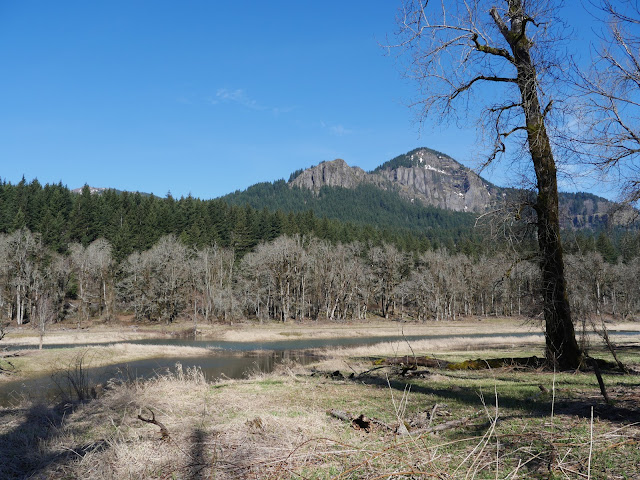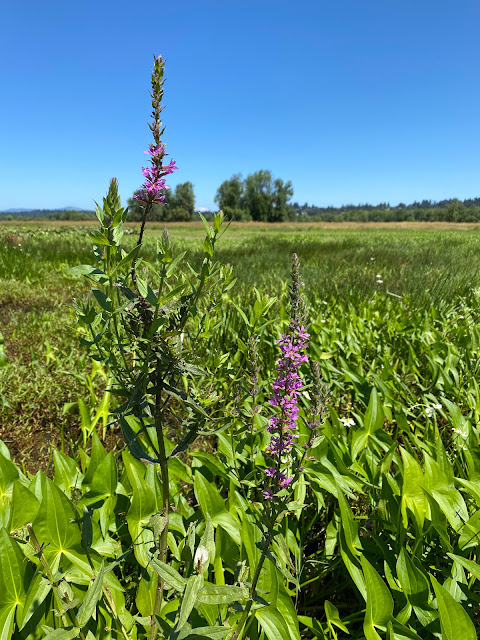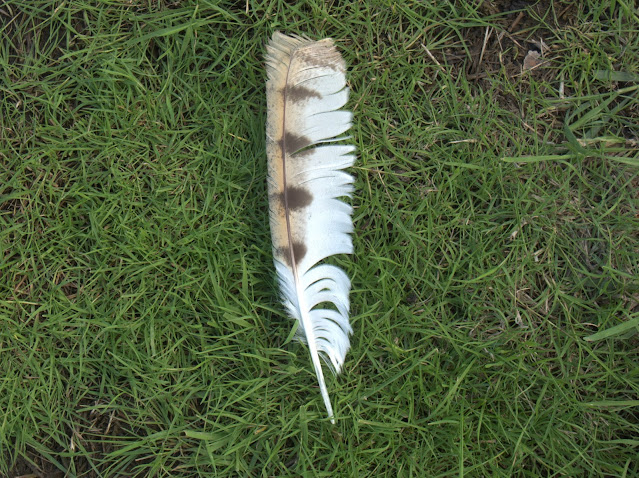During the first week of March, our Habitat Restoration Crew traveled up to Pierce NWR to plant native trees and shrubs. After clearing a large volume of Himalayan Blackberry and sowing the area with native grass seed last summer/fall, it is now important that we begin to repopulate the area with native plants. We ended up ordering 400 bare-root plants from a nearby native plant nursery, which included 100 each of Cascara, Ocean Spray, Bitter Cherry, and Pacific Dogwood. About 50 of these plants found homes here at Ridgefield NWR - 24 were planted in the Oaks to Wetlands Trail Restoration area, and 20 were planted near the high tunnel to be utilized as future plant stock for propagations. The remaining 350 were planted at Pierce NWR with the help of our Pierce Volunteer Crew.
Why must we replant?
Our Habitat Restoration Crew has been working at removing invasive Himalayan Blackberry from Western Pond Turtle Habitat (a State listed endangered species), up at Pierce NWR for many years. The blackberries block out the turtles from necessary overwintering and nesting habitat, and cause a huge problem for many other native species as well. Blackberries are not easy to get rid of by any means, and gaining control of this invasive requires a combination of different techniques. Tractors/brushbladers can physically chop down the blackberries, and herbicide treatments serve to chemically breakdown the plant and damage the root system.
Beyond physical and chemical removal, is important to recognize that a major step in blackberry removal is the replanting process. Sowing native grasses and planting native shrubs/trees is necessary in any area that has been cleared of blackberry. This is because the native plants provide competition for any blackberry that starts to regrow in these areas. Beyond this, the native plants will also provide a source of food, pollen, and improved habitat for many native wildlife!
 |
Pierce NWR is by far one of the most beautiful landscapes that I get to work on and enjoy. While planting is physically hard work, it is so rewarding to know that our efforts serve to improve habitat for many native animal species including those that are endangered (such as the Western Pond Turtle). Please enjoy the following photos from our work week at Pierce...
|
 |
Above you can see my planting set up!
A little bit about our methodology...When plants were taken out of their brown paper bags that we got from the nursery, they were immediately placed into buckets with water to keep their roots moist. Each species was sorted into bundles of three & tied together with a different color of tape. We planted each bundle in their own patch of 3 to help with establishment. Each individual plant was also fitted with plastic tubing to ward off predators. |
 |
Curt Mohler, Friends of RNWR Volunteer, placing a cage around his planting! |
 |
Keith Rutz, Habitat Restoration Coordinator for the Friends of Ridgefield NWR, digging some holes for his bareroot plants! In the distance you can see some patches that were already planted. |
 |
Elena Tinoco, Friends of Ridgefield NWR Volunteer Coordinator is fanning out the roots of a Pacific Dogwood about to be placed in the ground. When planting, it is very important to make sure that the hole dug is big enough for the root system. I usually aim to make the hole 1 to 2 inches larger than the root system itself. Otherwise, the roots can become tangled/bound up which causes growth and nutritional problems for the plant. |
 |
Our work zone included the forested hillside south of Domestic Springs. Here you can see a portion of the hillside that has been replanted with the native plants! |
 |
This photo gives you a better impression of the scope of the area that we were working in! You can see the tubes filled with plants spread about the landscape. |
I wanted to give a huge thanks to everyone that took the time to come out and plant last week. Getting over 350 plants in the ground was no small task, and we would not have been able to do it alone!
*While we are not able to bring on new volunteers at this time due to the pandemic, our volunteer coordinators are looking into ways to engage our volunteers virtually while we wait for life to get back to normal! Stay tuned for more opportunities*









Comments
Post a Comment